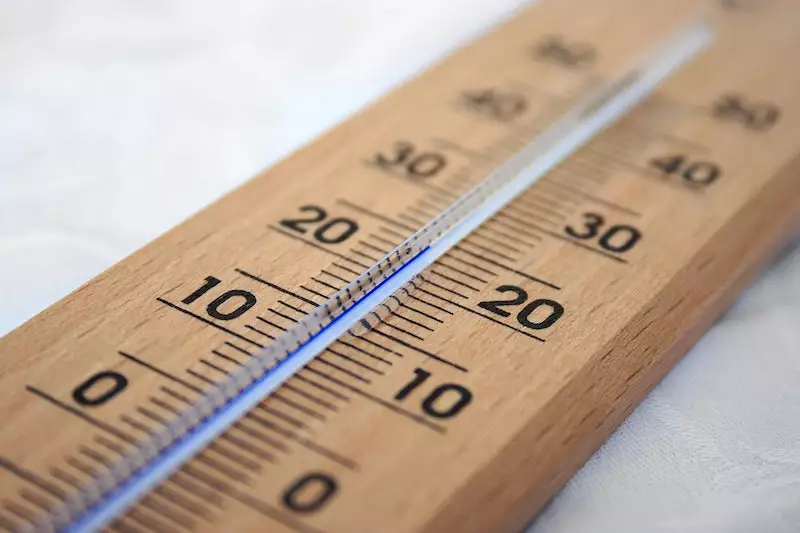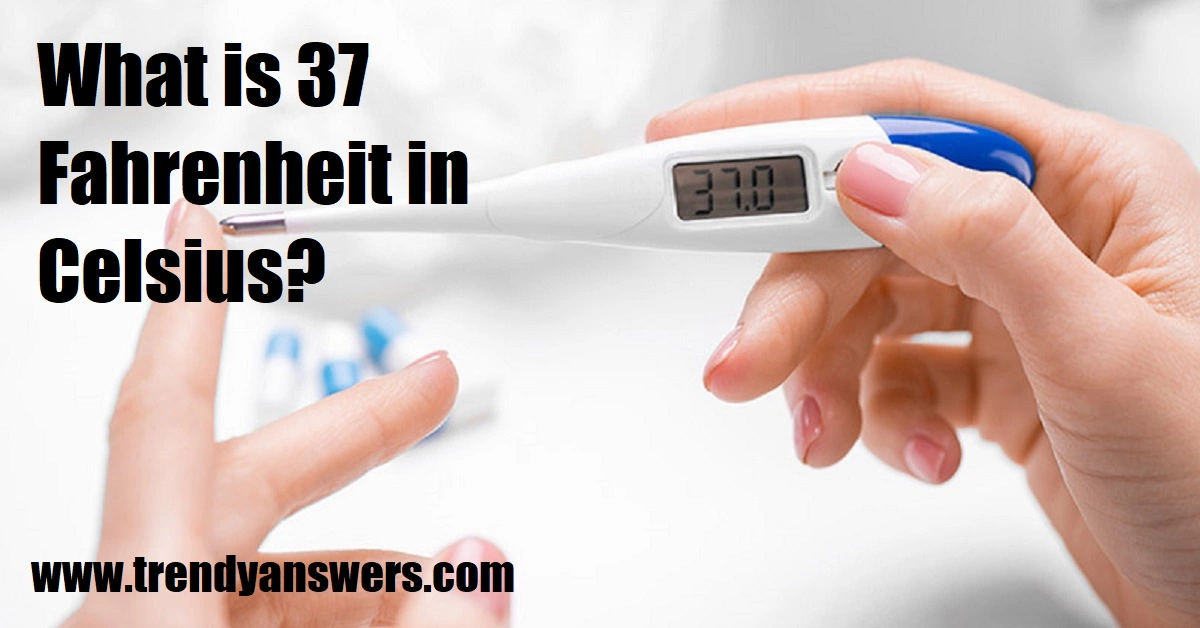Temperature is a fundamental aspect of our daily lives, affecting everything from the weather to cooking and human comfort. Two widely used temperature scales are Fahrenheit and Celsius. In this article, we will explore the differences between these scales, understand how to convert temperatures from one to the other, with example of What is 37 Fahrenheit in Celsius.

Also Read: How Many Ounces is 1/3 Cup – A Simple Conversion Guide
What is Fahrenheit?
Fahrenheit is a temperature scale commonly used in the United States and a few other countries. It was developed by Daniel Gabriel Fahrenheit, a Polish-German physicist, in the early 18th century. The Fahrenheit scale assigns a value of 32 degrees to the freezing point of water and 212 degrees to its boiling point at standard atmospheric pressure.
To convert Celsius to Fahrenheit, you can use the following formula:
°F = (°C × 9/5) + 32What is Celsius?
Celsius, also known as the centigrade scale, is the most widely used temperature scale globally. It was proposed by the Swedish astronomer Anders Celsius in the mid-18th century. The Celsius scale sets the freezing point of water at 0 degrees and the boiling point at 100 degrees at standard atmospheric pressure.
To convert Fahrenheit to Celsius, you can use the following formula:
°C = (°F - 32) × 5/9Differences between Fahrenheit and Celsius
The Fahrenheit and Celsius scales have distinct differences in their range and reference points. On the Fahrenheit scale, water freezes at 32 degrees and boils at 212 degrees, resulting in a range of 180 degrees between these two points. In contrast, on the Celsius scale, water freezes at 0 degrees and boils at 100 degrees, giving a range of 100 degrees.
Furthermore, Fahrenheit is primarily used in the United States and a few other countries, while Celsius is the standard scale used in most of the world. This difference in usage can sometimes lead to confusion when comparing temperatures between different regions.
Also Read: How Much is 18 Cups in Ounces? The Ultimate Guide
Importance of temperature conversion
Temperature conversion is crucial for global standardization and effective communication in scientific and practical contexts. The ability to convert temperatures from one scale to another allows researchers, engineers, meteorologists, and everyday individuals to interpret and compare temperature data accurately.
For example, in scientific experiments conducted by international teams, temperature measurements need to be converted to a common scale to ensure consistent analysis and interpretation of results. Similarly, weather forecasts from different countries are often presented in Celsius or Fahrenheit, requiring conversion for easy understanding by the general public.
What is 37 Fahrenheit in Celsius?
Converting 37 Fahrenheit to Celsius involves a simple calculation. Follow these steps:
- Subtract 32 from the Fahrenheit temperature.
- Multiply the result by 5/9 to obtain the Celsius temperature.
Let’s consider an example. Suppose we have a Fahrenheit temperature of 37 degrees. To convert it to Celsius, we apply the formula:
°C = (37 - 32) × 5/9
= 5 × 5/9
≈ 2.77°CTherefore, 37 degrees Fahrenheit is approximately equal to 2.77 degrees Celsius.
What is 37 in Celsius in Fahrenheit?
Converting Celsius to Fahrenheit follows a similar process. Here’s what you need to do:
- Multiply the Celsius temperature by 9/5.
- Add 32 to the result to obtain the Fahrenheit temperature.
Let’s illustrate this with an example. Suppose we have a Celsius temperature of 37 degrees. To convert it to Fahrenheit, we use the formula:
°F = (37 × 9/5) + 32
= (66.6 + 32)
= 98.6°FTherefore, 37 degrees Celsius is equivalent to 98.6 degrees Fahrenheit.
Common Temperature References and their Conversions
Temperature conversion is particularly relevant when dealing with common temperature references in various fields. Here are some examples and their conversions:
- Body temperature:
- Normal human body temperature is approximately 98.6 degrees Fahrenheit or 37 degrees Celsius.
- Weather forecasts:
- Many weather reports provide temperatures in both Fahrenheit and Celsius, allowing viewers to understand the conditions based on their preferred scale.
- Cooking temperatures:
- Recipes often specify cooking temperatures in either Fahrenheit or Celsius, catering to the diverse preferences of home cooks.
The impact of temperature on daily life
Temperature plays a significant role in our daily lives, influencing various aspects such as seasonal variations, climate patterns, and personal comfort. Understanding temperature conversions enables us to make informed decisions and adapt to different conditions effectively.
For instance, knowledge of temperature conversions allows us to plan our clothing choices according to weather forecasts, adjust thermostats to maintain comfortable indoor temperatures, and ensure proper cooking temperatures when preparing meals.
Conclusion
In conclusion, understanding temperature conversions between Fahrenheit and Celsius is essential for effective communication, scientific research, and practical applications. By learning also the conversion formulas and their applications, individuals can navigate temperature-related information, interpret data accurately, and make informed decisions in various contexts.
Also Read: 7 Money Rules you didn’t learn in school
FAQs
- Q: Why do some countries use Fahrenheit while others use Celsius?
- A: The choice of temperature scale is largely based on historical reasons and regional conventions. Different countries and regions adopted various scales, and these preferences have persisted over time.
- Q: Can I use online temperature converters for accurate conversions?
- A: Online temperature converters can be helpful for quick conversions. However, it’s always beneficial to understand the underlying formulas to ensure accuracy and have a deeper comprehension of the conversion process.
- Q: Are there any other temperature scales apart from Fahrenheit and Celsius?
- A: Yes, there are other temperature scales such as Kelvin and Rankine. Kelvin is commonly used in scientific research and is based on absolute zero, while Rankine is primarily used in engineering contexts.
- Q: How can I convert temperatures between Kelvin and Celsius?
- A: To convert temperatures between Kelvin and Celsius, simply add or subtract 273.15. To convert from Celsius to Kelvin, add 273.15 to the Celsius temperature. To convert from Kelvin to Celsius, subtract 273.15 from the Kelvin temperature.
- Q: Why is Fahrenheit still used in the United States?
- A: Fahrenheit is deeply ingrained in American culture and everyday life. Despite the global standardization of Celsius, Fahrenheit remains prevalent in the United States due to historical reasons, familiarity, and resistance to change.
Thank you for reading our article on Fahrenheit in Celsius and temperature conversion. If you have further questions or would like to explore more topics related to temperature, feel free to reach out.
